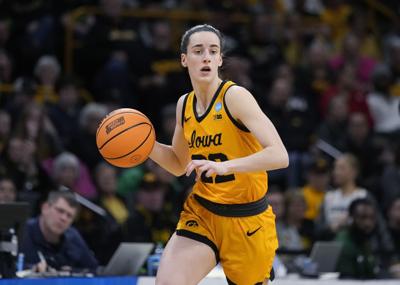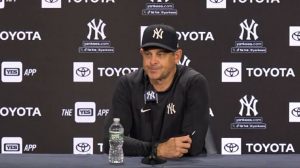
Great Job: Caitlin Clark, made iowa woman Basketball History Against O…
This summer, USA Basketball hopes to win eight gold medals at the Olympics. The first step toward that goal is the Olympic qualifying tournament, which takes place in Antwerp, Belgium, from February 8–11. The initial approximation of the squad that will defend the Americans’ gold title in Paris will be the 12-player roster for that competition.
The committee will have a very difficult time choosing that final roster from among the 18 players who have been invited to the national team camp in Brooklyn, New York, which is scheduled for February 2-4. The selection process will also be complicated by the fact that the final roster will likely include current college players, mostly Caitlin Clark, but USA Basketball veterans Paige Bueckers and Cameron Brink may also play a role. The players will turn pro at the end of the 2023–24 season.
The final roster will ultimately make a statement about what the committee values: youth and the future or experience and proven success. USA Basketball has generally balanced old and young on the international team so that the younger players can carry the torch and preserve the culture. Including — or not including — Clark poses a unique dilemma with the wealth of options before the committee.
Diana Taurasi, one of the eight Olympians from Tokyo in 2021 who is back in the national team pool, is on the other end of the spectrum from Clark. Taurasi wants to make history by being the first basketball player, male or female, to participate in six Olympics. In addition, she would become the third American woman to compete in six games in any sport and the oldest Olympian in basketball history. Taurasi is sure to make her way back to the lineup, if she stays healthy. The 41-year-old even took part in the collegiate barnstorming tour for USA Basketball in November, playing against Duke and Tennessee, which was probably optional for a player with her lineage.
The members of the Tokyo squad that are joining Taurasi are Ariel Atkins, Napheesa Collier, Chelsea Gray, Brittney Griner, Jewell Loyd, Breanna Stewart, and A’ja Wilson. With the exception of Griner, who has exceptional circumstances and is certain to play in red, white, and blue if she so desires, Atkins is the only returnee whose play has deteriorated since the last Olympiad. Nevertheless, given that she represented the USA in the 2022 FIBA World Cup, Atkins is expected to be given priority by the committee. But out of these eight players, hers is arguably the least certain status as an Olympian for 2024.
There are just four or possibly five seats left for fresh applicants, and there is a lot of competition. The World Cup roster also included Kahleah Copper, Betnijah Laney, Alyssa Thomas, Sabrina Ionescu, and Kelsey Plum. Despite having the lowest minutes per game in Australia, Ionescu, Plum, and Thomas have all been selected to the All-WNBA team in the last two seasons; the latter two even being in the top five for MVP vote. Plum’s experience with the three-on-three squad should also offer her an advantage when it comes to the committee. This takes us to Allisha Gray and Jackie Young, two other gold medalists who made their debut in the sport in 2021. Particularly Young, both players appear too talented to be off the squad, but that is always the case with the
It always seems like the case with the players who are too good to be left off the squad, especially Young.
Not to mention Aliyah Boston, Rhyne Howard, and Arike Ogunbowale—three of the younger camp invites—all seven of those players would be deserving choices for the Olympics. All Boston has done is complete one of the most accomplished collegiate careers in recent memory, win numerous gold medals for the United States at the younger levels, be named the WNBA All-Star Game starter, and win rookie of the year. Honestly, Boston appears to be a lock to finish in the sixth frontcourt place, behind Collier, Wilson, Stewart, Griner, and Thomas. Up until the Olympics in 2028, Howard and Ogunbowale—both All-Stars who would lead any other national team in the world in scoring—are most likely on the outside looking in.
The youth question comes next. Neka Ogwumike’s 2012 omission was odd, and her absence from subsequent Olympic rosters has made that snub even more ridiculous in retrospect. The No. 1 picks in the WNBA drafts in 2004, 2008, and 2016 made the Olympic teams as rookies, and a similarly loaded draft class is on deck to carry that tradition. After finishing last on the roster, the youthful players develop into the team’s future leaders. Wilson has stated that she learned how to set the standard from Sue Bird and Taurasi, and she used this knowledge to practice setting the standard with Stewart in the most recent World Cup.
Although it would make sense for Clark to be the most recent ingénue to replace her as Team USA’s 12th player, there might not be enough room given that Taurasi, the 2004 No. 1 pick, is still going strong. Maybe the committee will find comfort in Boston’s representation of the younger generation in the backcourt against a group of older guards. It will be tough enough to choose between Atkins, Copper, Allisha Gray, Ionescu, Ogunbowale, Plum, and Young for what should be three positions without having to include Clark.
However, the effect of Caitlin Clark is real. How could USA Basketball pass up the opportunity to profit from one of the biggest stars in the game’s rabid popularity when the replacement is unlikely to see much playing time? The largest international showcase for women’s basketball is the Olympics. If the selection committee wishes to capitalize on the enthusiasm the sport is creating domestically, a player like Clark should be on that platform.





